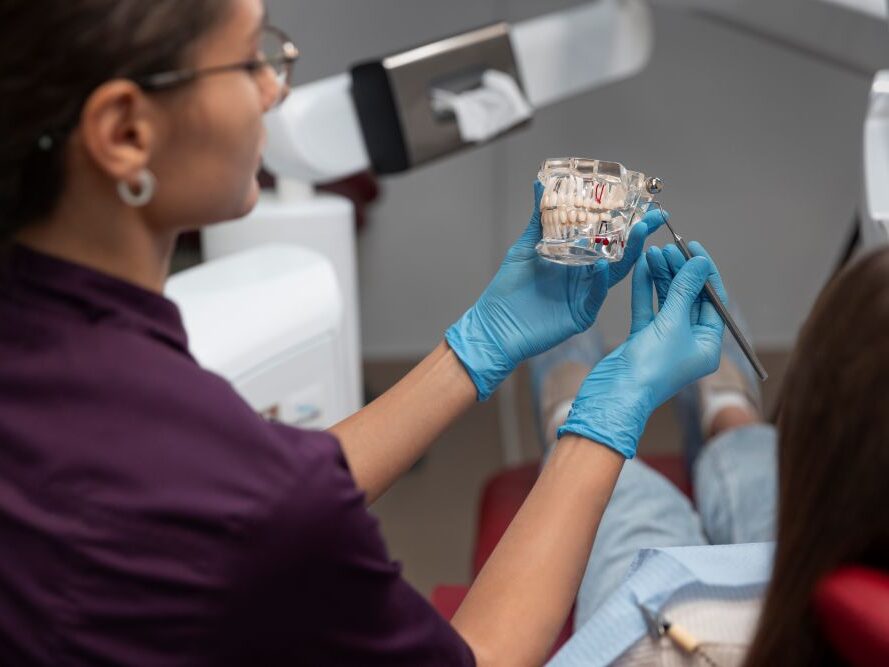
A dental arch is the curved shape your teeth make inside your mouth. It helps with chewing, speaking, and maintaining a balanced smile. When the teeth in the arch line up correctly, it protects your gums and jaw from stress. If the arch is crowded or uneven, daily tasks such as eating and talking can become more difficult, and long-term dental problems may develop. Learning how the dental arch works can help you take care of your mouth and make smart choices for the best dental care.
Importance of Understanding Dental Arch
Knowing the dental arch helps dentists check your bite and plan the right treatments. The arch is the shape where your teeth sit, supported by bone and gums. It affects chewing, speech, and face shape. When dentists examine the arch closely, they can identify crowding, bite issues, or spacing problems early. This knowledge also enables them to create effective solutions, such as braces, clear aligners, veneers or dentures, to enhance comfort and function.
Anatomy of Dental Arch
The dental arch consists of several components that work together to maintain the health of your mouth. Here are four main components:
- Teeth: They help break down food and support clear speech.
- Gums: They protect teeth and hold them in place.
- Alveolar Bone: This bone supports each tooth and helps maintain the arch’s strength.
- Periodontal Ligament: This soft tissue connects teeth to bone and absorbs pressure when chewing.
Understanding these parts makes it easier to protect your smile and spot problems early.
Dental Arch Alignment
A well-aligned dental arch helps your teeth fit together correctly. When both arches align, chewing becomes smoother and teeth avoid excessive wear. If the arch is not properly aligned, it may cause problems such as jaw pain, grinding, or difficulty chewing. Bite issues, such as overbites, underbites, and crossbites, often require orthodontic care to correct. Checking alignment early helps prevent bigger dental issues later.
Impact on Oral Health
A healthy dental arch supports your whole mouth. When alignment is correct:
- Chewing Efficiency: Food breaks down more easily, helping digestion.
- Speech Clarity: Teeth and jaw placement support clear speech sounds.
- Gum Health: Even pressure helps lower the risk of gum disease.
- Jaw Comfort: Balanced arches help avoid jaw strain and TMJ discomfort.
Dental Arch Disorders
Sometimes dental arches develop problems that need attention. Malocclusion occurs when teeth do not meet correctly, making chewing and speaking more difficult. Crowding occurs when teeth do not have enough room, resulting in overlapping or twisting. Spacing issues happen when there are large gaps between teeth. These conditions can impact comfort, appearance, and oral health if left unaddressed. Regular check-ups help catch them early, making dental treatment easier and more effective.
Maintaining a Healthy Dental Arch
Maintaining a healthy dental arch requires consistent care. Here are four simple habits to support good alignment:
- Regular Dental Check-ups: Routine visits help track tooth position and catch changes early.
- Orthodontic Treatment: Braces or aligners can guide teeth into better placement when needed.
- Healthy Diet: Foods rich in calcium and vitamins help strengthen teeth and bones.
- Proper Oral Hygiene: Brushing and flossing daily keeps gums strong and reduces the risk of shifting teeth.
Related Topics:
